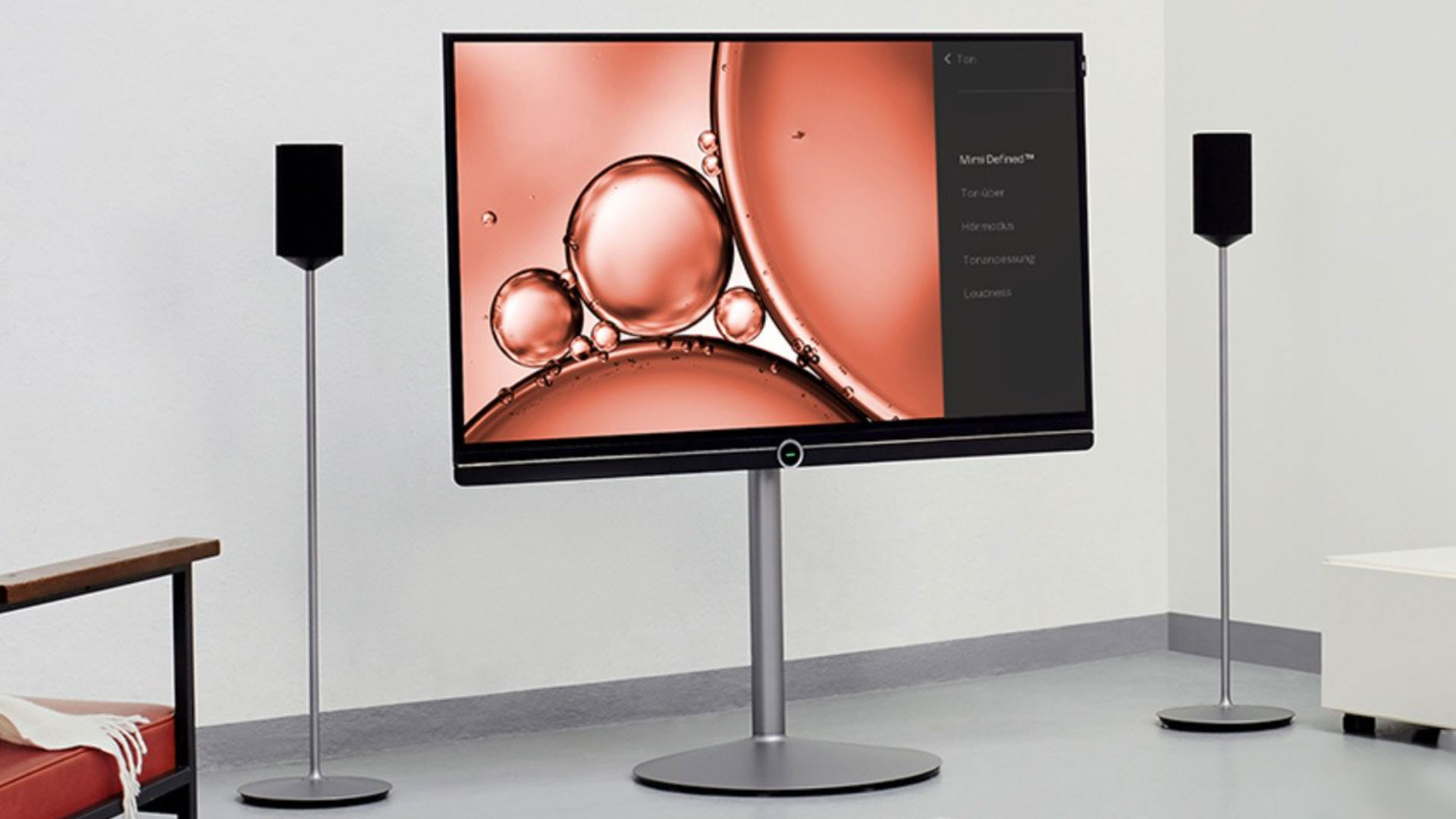Loewe and Mimi Defined will test your hearing and create personalised TV audio
It's makes a surprisingly profound difference

Don’t panic, but the quality of your hearing will have peaked during your twenties. While you’re not necessarily destined to go completely deaf after that stage of your life, research shows that you’ll never again hear the full range of frequencies with the same clarity as during your youth.
If we were talking about blurry vision while sitting down in front of your OLED TV, you’d be running to the opticians to get fitted up with sleek new spectacles. But with hearing degradation being a more subtle loss, we don’t react in the same way. Which is why TV manufacturer Loewe is teaming up with Berlin-based audio experts Mimi Hearing Technologies.
- Check out the cheapest OLED deals
- Best OLED TVs: our pick of the best OLED sets out there
- OLED vs QLED: which TV technology is better?
Personalised TV audio
Together, the two companies are joining forces to create personalised, customised audio for owners of new Loewe TVs like the Loewe Bild 3 and upwards in the range.
The technology, called Mimi Defined, combines an on-phone, in-app hearing test with an audio processing feature in the Loewe TVs themselves.
Rather than moving to simply turn the TV volume up when you can’t hear what’s going on clearly, Mimi Defined instead pairs your hearing test results up with the TV's audio output, boosting and masking certain frequencies to make for a more legible overall sound.

We gave the tech a quick listen during a demo in London, and were surprised by the immediate effect it had on the immersiveness of the TV's sound. And, frankly, we were also a little frightened about how much our 30-something year old ears benefited from a profile tuned for someone twice our age – decades of punk rock gigs have not been kind on our eardrums, it seems.
The Mimi Defined tuning gave a much greater sense of space and clarity to the audio outputted by the TV. We were shown footage of hip young Germans frolicking in a forest – Mimi Defined was able to pick up far greater detail (like the rustling of leaves and background chatter) without hollowing out the bottom end lower frequencies of the recording.
Get daily insight, inspiration and deals in your inbox
Sign up for breaking news, reviews, opinion, top tech deals, and more.
It worked well in a sports setting too – we were shown footage of an NFL game and, rather than giving the sense of the commentators' chat sitting on top of the stadium sounds, they seemed embedded as part of a more raucous whole.
The ears of the world
The Mimi Hearing Test app, which takes just a few minutes to complete and is available on iOS and Android, has been free to use for years, affording the company’s audio experts a database of more than one million anonymised test results with which to compare a listener’s personal results against.

This therefore goes some way to solving a potential problem with personalised audio during a TV viewing session – you’re unlikely to be watching alone, and everyone’s hearing is slightly different. But by having a test subject sample set numbering into the millions, Mimi Defined is able to find the middle ground of hearing loss from within a certain demographic. So if you and your friends are all in your 30s, you’ll be able to tune the Loewe TV to output its audio to a setting that broadly compensates for the most common forms of hearing loss throughout that age range.
And, it’s worth noting, it’s a sliding scale that Mimi Defined works in too, rather than a binary one – if you’re not a fan of the new, post-hearing test mix when it’s working at full blast, you can tweak Mimi Defined to be a little less present, and closer to the television’s original mix.
It’s an interesting concept, and one that is surprisingly striking in action. The Mimi Hearing Technologies team believes its done enough work with its huge sample set to counter issues like TV placement in a room and low-quality headphones being used in the initial test, to the point where its confident that all listeners, young or old, will benefit from the audio processing it delivers. And, if the only alternative is turning a TV up to damagingly-noisy volume levels to pick out increasingly-faded details, it’s a definite win.
- TV stands: finding the best TV stand to suit your living room cinema needs
Gerald is Editor-in-Chief of iMore.com. Previously he was the Executive Editor for TechRadar, taking care of the site's home cinema, gaming, smart home, entertainment and audio output. He loves gaming, but don't expect him to play with you unless your console is hooked up to a 4K HDR screen and a 7.1 surround system. Before TechRadar, Gerald was Editor of Gizmodo UK. He is also the author of 'Get Technology: Upgrade Your Future', published by Aurum Press.
